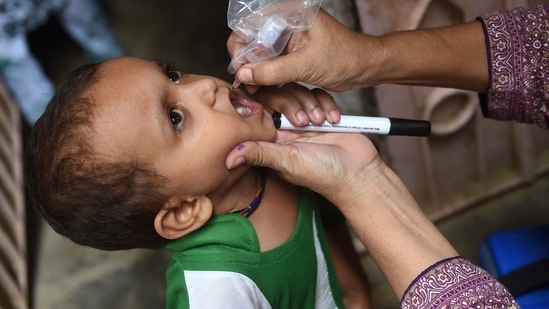Discovery of poliovirus around the world alarms researchers, what can be done to contain it
The poliovirus outbreak in many regions around the world has alarmed researchers. Reports suggest it comes from an oral polio vaccine used in some countries. Read more details inside.
This year, the poliovirus was discovered in New York, London and Jerusalem - two cases of polio-related paralysis were reported in Jerusalem in February and New York in June (it is the first case in the US in nearly a decade). The news has taken many by surprise. Reports suggest that the poliovirus found in these regions comes from an oral polio vaccine used in some countries. Additionally, wastewater samples in these areas indicate that the virus is circulating more widely.

Vaccine-derived poliovirus, particularly found in Africa and Asia, comes from a widely used oral vaccine that contains a live, weakened virus that sometimes mutates to a dangerous form capable of infecting the nervous system. However, the United States and the United Kingdom use an injectable vaccine containing the inactivated virus, which can keep the virus from infecting the nervous system. But it is not as effective as the oral vaccine.
The dreaded poliovirus
Polio has no cure and causes irreversible paralysis in less than one in 200 of the susceptible people it infects. But since a vaccine was found in the 1950s, polio is entirely preventable. Globally, the wild form of the disease has almost disappeared. Afghanistan and Pakistan are now the only countries where the highly infectious disease, spread mainly through contact with faecal matter, remains endemic. But this year, imported cases were found in Malawi and Mozambique, the first in those countries since the 1990s.
(Also Read: Polio fears rise in New York amid possible community spread)
There are two main forms of poliovirus. Alongside the wild-type, there are also rare cases of vaccine-derived polio. It is this second form detected in wastewater in London and New York. A similar virus has also been found in Jerusalem and Israel.
Now, in an interview, the British weekly scientific journal, Nature, talked to researchers about the scale of the outbreak and what can be done to stop it. Walter Orenstein, who studies infectious diseases at Emory University in Atlanta, told the journal that the "virus is very, very good at finding unvaccinated individuals." While vaccinated children get spared from the virus's worst effects, unvaccinated people are vulnerable to the illness.
Orenstein added, "In New York, the virus has been detected in two counties as well as New York City, a geographical spread that is very concerning. It suggests we have had substantial transmission." However, in London, the virus seems to have remained concentrated in the city's north and east, infectious-disease epidemiologist Nicholas Grassly at Imperial College London said.
Additionally, boosting vaccination efforts should fill gaps caused by the Covid-19 pandemic and contain the outbreak in the United States, Israel and the United Kingdom. But the drives in London and New York will use the injectable vaccine, so they will not stop virus transmission, Grassly told Nature. "If in six months or so, wastewater testing suggests that poliovirus has continued to spread, it might be necessary to look at other options," he added. For instance, WHO has listed a new oral polio vaccine for emergency use.
However, the vaccine has not yet undergone large-scale human testing and has not been approved by UK or US regulators. But more than 100 million people have received it, says Andino-Pavlovsky, who helped to design the vaccine.
Catch your daily dose of Fashion, Taylor Swift, Health, Festivals, Travel, Relationship, Recipe and all the other Latest Lifestyle News on Hindustan Times Website and APPs.
Catch your daily dose of Fashion, Taylor Swift, Health, Festivals, Travel, Relationship, Recipe and all the other Latest Lifestyle News on Hindustan Times Website and APPs.






